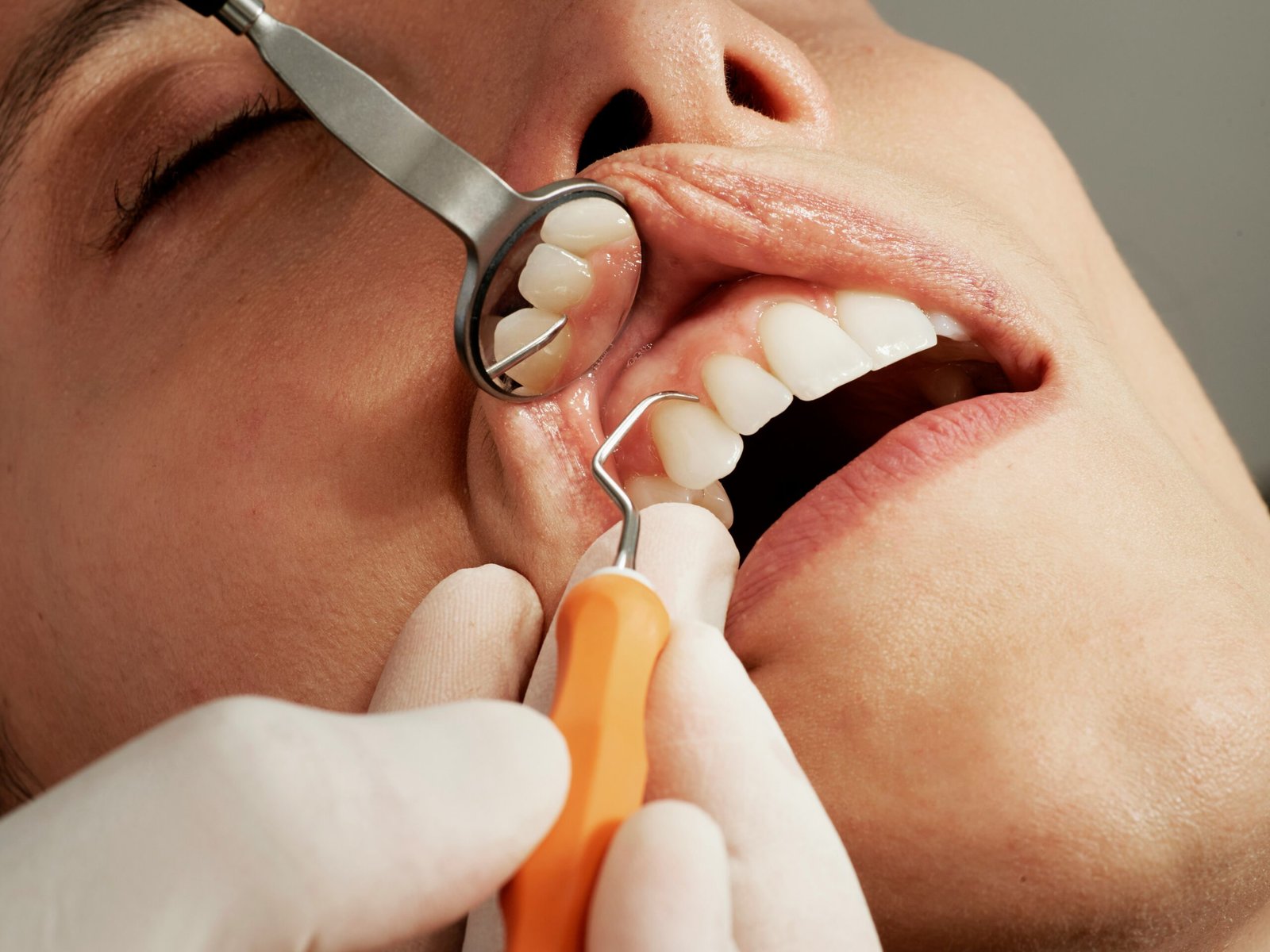
Gum diseases affect a large part of the population and, if left untreated, can seriously impact oral health. Understanding their signs, causes, and treatment options is key to preserving a healthy smile and preventing tooth loss.
Main gum diseases
Periodontitis
Periodontitis is an advanced form of periodontal disease that affects the supporting tissues of the teeth, including the gums and alveolar bone. It is characterized by chronic inflammation and progressive bone loss around the teeth, which can lead to mobility and, in severe cases, permanent tooth loss.
Gingivitis
Gingivitis is the initial stage of periodontal disease. It appears as gum inflammation caused by plaque buildup. If left untreated, it can progress to more severe periodontitis.
Gum recession
Gum recession occurs when the supporting tissues of the teeth deteriorate, exposing the dental roots. This not only increases tooth sensitivity but also weakens stability and can lead to mobility.
Bleeding gums
Bleeding gums are one of the early signs of periodontal disease, often linked to gingivitis. Inflamed gums bleed easily, especially during brushing or flossing.
Treatments for gum diseases
Non-surgical treatments
- Oral hygiene: The first step in fighting gum disease is to adopt strict dental hygiene: regular brushing, flossing, and antiseptic mouth rinses.
- Professional debridement: In cases of mild to moderate gingivitis, a scaling or professional debridement performed by a dentist or dental hygienist helps remove plaque and tartar accumulated along the gums.
Surgical treatments
- Root planing: For advanced cases, a deep cleaning of the roots is necessary. This procedure smooths the root surfaces to allow the gum tissues to reattach properly.
- Gum graft: In cases of severe recession, a gum graft can restore lost tissue. Healthy gum tissue is taken to strengthen the affected areas and protect the tooth roots.
Preventing gum diseases
Prevention is the key to avoiding periodontal diseases. Here are some recommendations:
- Maintain impeccable oral hygiene.
- Visit your dentist regularly for check-ups and professional cleanings.
- Keep a balanced diet and limit risk factors such as smoking.
By taking care of your gums at the first signs, you protect the health of your teeth and keep a bright smile for years to come.
Mucogingival surgery
Mucogingival surgery is a specialty of periodontology aimed at treating diseases affecting the gums and oral mucosa. It is particularly used in cases of gum recession, bone loss around the teeth, or other advanced periodontal conditions. These issues can have several causes:
- Poor oral hygiene
- Traumatic brushing
- Genetic factors
- Repeated mechanical trauma (such as piercings)
- Exaggerated inflammatory responses
When gums recede: understanding gum recession
Gum recession occurs when the gum gradually migrates down toward the root of the tooth, exposing it. This situation is particularly common in the lower incisors, where the supporting tissues are naturally thinner, but it can affect the entire dentition.
Consequences ?
- Increased tooth sensitivity due to root exposure
- Higher risk of root cavities
- Altered aesthetics, giving the impression of “longer” teeth
- Weakened tooth stability in cases of loss of attached gum
Surgical treatment: root coverage and tissue regeneration
Mucogingival surgery corrects these imbalances through various techniques, including root coverage. The goal is twofold:
- Protect exposed roots: since root surfaces are more vulnerable to wear and sensitivity, covering them helps restore patient comfort.
- Restore gum harmony: healthy, well-positioned gums contribute to an attractive smile and long-term dental stability.
Depending on the clinical situation, gum grafts or guided tissue regeneration techniques may be proposed to rebuild functional and aesthetic gingival architecture.